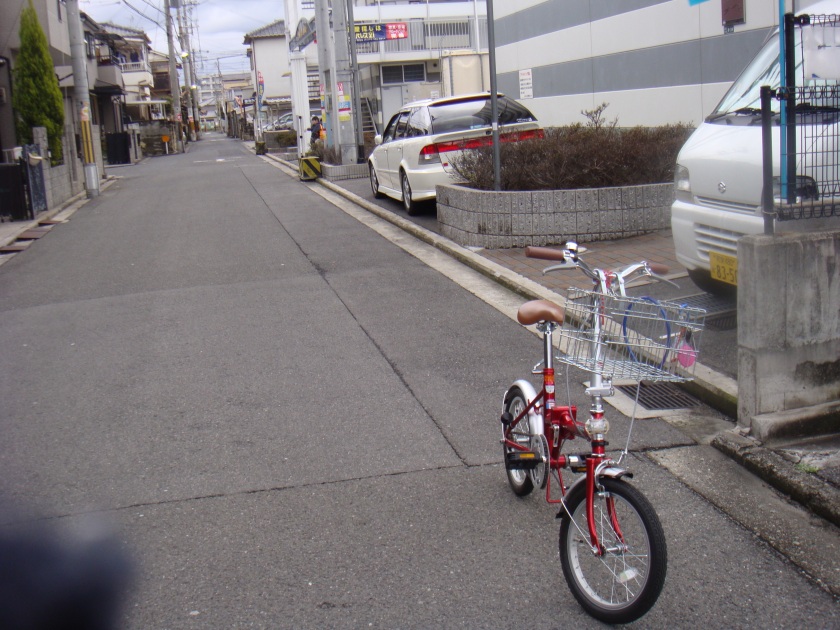
私は自分の自転車にマンディという名前を付けました。
Watashi wa jibun no jitensha ni “Mandy” toiu namae o tsukemashita.
I named my bicycle “Mandy”.
One of the first things I noticed in Japan during my stay was their excellent transportation system. Their trains and buses arrive and leave right on time. I barely experienced any traffic jam. Their buses only stop in proper bus stops. Every vehicle parks in proper parking lots.
Japan’s transportation system had made traveling from one place to another very convenient for me; except for one minor problem. Every time that I have to go to a place that is far from any train or bus station, I would either need to walk or ride an expensive taxi cab. trying to save money, I most of the time walk. In a way, I knew this was good for my health but it can get really tiring and time-consuming at times. So, to solve the problem, I bought a bicycle.

That portable red beauty on the picture above is my bicycle I named “Mandy”. Since i bought her I was able to travel farther and faster and it also helped me save money by not having to ride trains or buses anymore for locations that can be reached through bicycle. Mandy also helped me get fit. I never remember my belly to be as flat!
自転車(Jitensha) is the Japanese for bicycle. The word 自転車 jitensha can be used as follows:
自転車に乗ります。
Jitensha ni norimasu.
Ride a bicycle.
In stating your mode of transportation in going a certain place, you can use the following pattern.
<mode of transportation>で<place>へ行きます。
<mode of transportation> de <place> e ikimasu.
ex:
(私は)自転車でスーパーへ行きます。
(Watashi wa) jitensha de sūpā e ikimasu.
I am going to supermarket by bicycle.
(私は)電車で東京ドームへ行きます。
(Watashi wa) densha de Tokyo do-mu e ikimasu.
I am going to Tokyo dome by train.
Planning to navigate Japanese streets through a Mandy of your own?
Make your exploration more fun by learning the basics of the Japanese Language.
Join our
BASIC JAPANESE FOR TRAVELERS WORKSHOP
Saturday, May 2017
Makati area
Avail our early bird promo of Php 650 until March 31, 2017 only.
Reserve your seat by filling up our online form on the link below.
https://goo.gl/forms/y66cOOBGckxHYUii1


